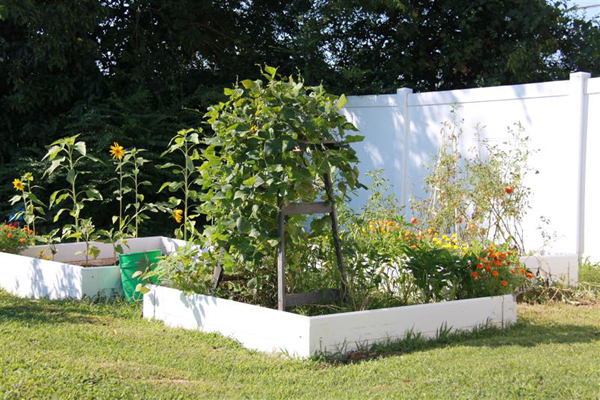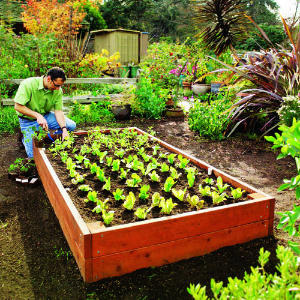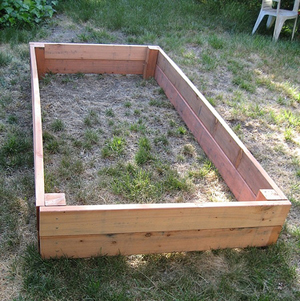If you’re itching to do a little work in the garden and just can’t wait until the spring, here’s an idea that’s growing in popularity lately.
Constructing some raised garden beds to contain your plants can help keep grass and weeds out, keep a little more water in and and give you a little more control over the soil in this smaller space.
This long-term investment in your veggie production can also dress up your yard, adding a little pop of color and ornamentation to your property with just a small amount of expense and labor. Weed-eating around these garden boxes can make your small urban yard appear a little more streamlined than having one large traditional garden patch.
As it happens, the Mayo family had a vinyl fence put up a couple of years ago (to contain the Jr.), and months later, as we were discussing bringing in some garden boxes, realized the leftover vinyl planks would not only work perfectly, but would actually match the fence. Fortunately, there were just enough pieces left over to construct three 5 1/2′ x 5 1/2′ planter boxes, one foot high.
If you don’t have leftover fence parts lying around, it may still be worth your while to go by Papa’s Hot Sauce Store and Prestigic Vinyl Creations (2910 Old Fort Pkwy.) and see if he will make you a deal on a few vinyl planks to use to construct your planter.
Of course, lumber will work just fine too. The National Gardening Association labels cedar, white oak, redwood, black cherry, black walnut and cypress woods as “very decay resistant.” Many gardeners suggest avoiding pressure-treated lumber, due to the potential risk that your plants will be contaminated by chemicals used in the treatment process.
Use either a small piece of post inside each corner of the boxes, or a hinge on the outside of each corner, to screw or nail the boards to.
About 4′ x 6′ is perfect, so you can reach in to rake, chop, weed and harvest, without actually having to step in the box. (It can be a little difficult to reach the very center of our 5 1/2′ x 5 1/2′ beds without stepping inside).
Don’t worry, they certainly do not have to be perfect works of art—you are filling them up with dirt. Go ahead, fill them up with dirt, compost, leaves, all sorts of organic material, and let it decompose for a few months before planting season is here. It’s right around the corner.
















